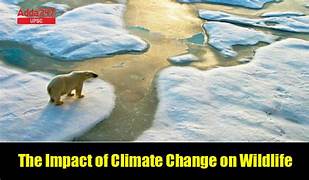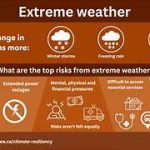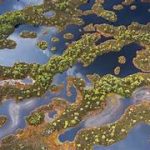Implications of Climate Change for Wildlife: Extinction and Adaptation
Introduction
Climate change is altering ecosystems across the globe, posing unprecedented challenges to wildlife. From shifting habitats to the extinction of species, the ripple effects of a warming planet are profoundly reshaping the natural world. Understanding these impacts and fostering adaptive strategies are crucial for preserving biodiversity and maintaining ecological balance.
The Connection Between Climate Change and Wildlife
The rising global temperature affects ecosystems in multifaceted ways. It alters the distribution of species, disrupts food chains, and accelerates habitat loss. These changes are particularly severe for species with limited adaptability or those living in specialized environments.
- Habitat Destruction and Fragmentation
- Melting ice caps and rising sea levels are reducing habitats for polar species like polar bears and seals.
- Deforestation and desertification, driven by climate change, are shrinking habitats for countless terrestrial species.
- Altered Migration Patterns
- Many migratory species, such as birds and marine mammals, are experiencing disrupted migration cycles due to unpredictable weather patterns.
- Changes in ocean currents and water temperatures affect the availability of food along migration routes.
- Shifts in Biodiversity
- Species that thrive in warmer climates are expanding their ranges, often displacing native species.
- Ecosystems such as coral reefs are experiencing biodiversity loss due to phenomena like coral bleaching.
Extinction Threats
Climate change has already been implicated in several extinction events. Species that cannot adapt quickly enough to rapid environmental changes face heightened extinction risks.
- Specialized Species
- Organisms with narrow ecological niches, such as amphibians, are particularly vulnerable.
- Species dependent on specific environmental conditions, like cold-water fish, face population declines.
- Endangered Ecosystems
- Coral reefs, often referred to as the “rainforests of the sea,” are declining due to ocean warming and acidification.
- Arctic ecosystems are under threat as ice melts at unprecedented rates, impacting species like the Arctic fox.
Wildlife Adaptation to Climate Change
Despite these challenges, many species are exhibiting remarkable adaptive behaviors. However, adaptation is not uniform and varies across ecosystems.
- Behavioral Changes
- Animals are altering their feeding habits, nesting sites, and activity patterns to cope with new conditions.
- Some species are migrating to higher altitudes or latitudes to escape rising temperatures.
- Genetic Adaptation
- Evolutionary changes are occurring in some populations, such as shorter breeding cycles or altered physical traits.
- Rapid adaptation is more likely in species with short lifespans and high reproductive rates.
- Ecosystem Resilience
- Some ecosystems, like mangroves and wetlands, demonstrate resilience by adapting to rising sea levels.
- Protected areas and conservation efforts are aiding species adaptation by providing safe habitats.
The Role of Conservation Efforts
Conservation plays a vital role in mitigating the impacts of climate change on wildlife. Efforts to preserve biodiversity and restore ecosystems are essential to counteracting the worst effects.
- Protected Areas
- Expanding national parks and marine protected areas ensures safe habitats for vulnerable species.
- Establishing wildlife corridors helps maintain connectivity between fragmented habitats.
- Reforestation and Habitat Restoration
- Reforestation projects combat habitat loss and sequester carbon from the atmosphere.
- Restoring degraded habitats supports species that rely on those environments.
- Global Collaboration
- International agreements like the Convention on Biological Diversity foster collective action to address biodiversity loss.
- Funding for conservation projects and climate research supports adaptive strategies worldwide.
Future Outlook
The future of wildlife depends on our ability to address climate change. While some species may adapt, others face extinction if global temperatures continue to rise. Combining mitigation efforts, such as reducing greenhouse gas emissions, with targeted conservation initiatives is critical to ensuring the survival of diverse species.
Conclusion
Climate change poses profound challenges to wildlife, driving extinction risks and necessitating adaptation. By understanding these dynamics and implementing effective conservation strategies, humanity can help protect the planet’s biodiversity. A collaborative approach that includes scientific research, policy changes, and grassroots action is essential for fostering resilience in the face of an uncertain future.


